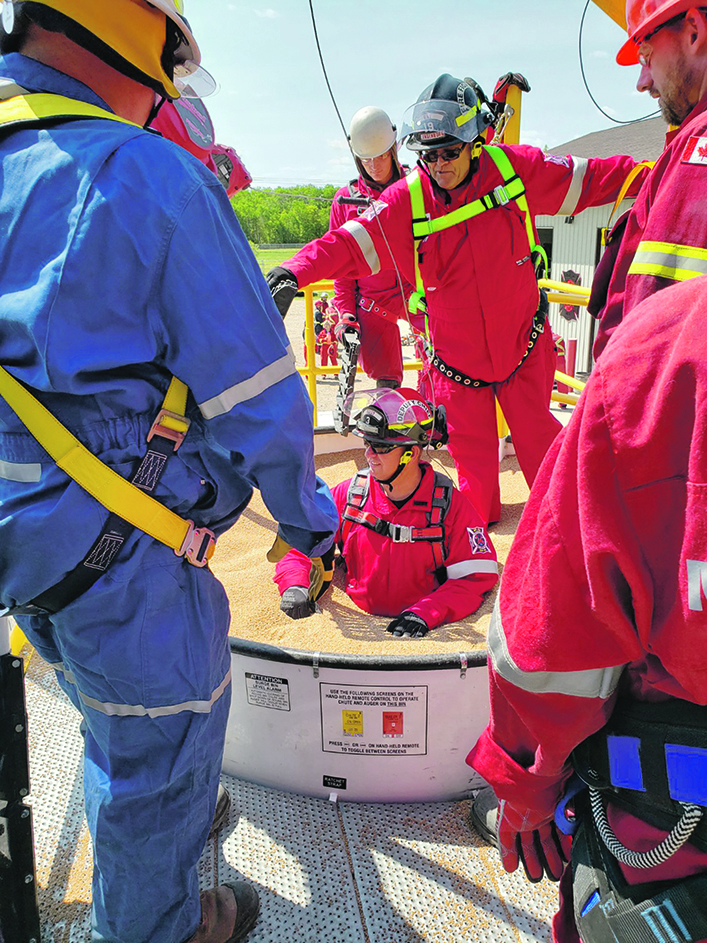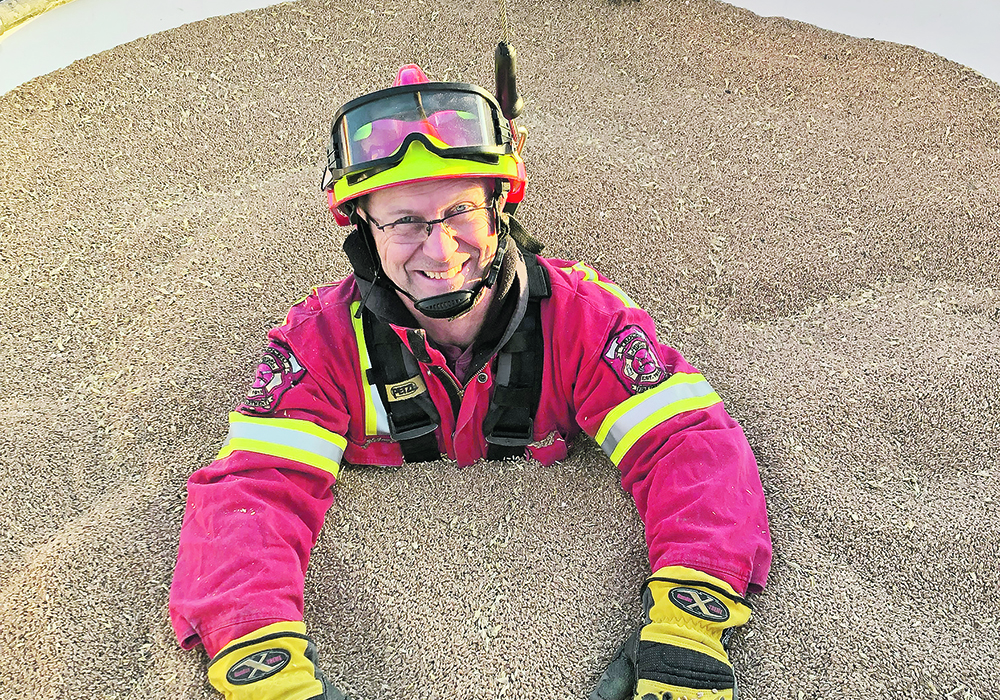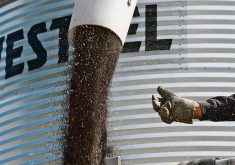Canadian Agricultural Safety Association offers grain entrapment training for farmers and firefighters
It was too close for comfort. On Feb. 9, a battalion of east-central Alberta firefighters rescued a man trapped up to his chest in a grain bin.
It’s unknown whether anyone on that rescue team had taken the Canadian Agricultural Safety Association’s grain bin rescue training, but the incident showed emergency responders can manage this type of rural emergency.
Since 2017, CASA has been using “master trainers” who prepare firefighters to handle grain entrapment incidents on farms or at grain handling facilities. It’s a part of the national organization’s BeGrainSafe education and awareness program.
Dan Marsellus, a fire chief from central Alberta, is a master trainer. He considers himself lucky that he’s never been involved in a grain rescue in the five years he’s been in his position.
“The opportunity is always there because there’s always people (saying) ‘well, it’s just a couple of seconds. I’ll be fine.’ That’s when you get into trouble.”
Although awareness of grain bin safety risks is growing, entrapment is among the top 10 causes of fatal on-farm injury, said Robin Anderson, director of programs and communications with CASA.
According to Canadian Agricultural Injury Reporting statistics, from 2011 to 2020 Canada experienced 27 deaths related to asphyxiation in grain or soil.
“We’ve seen an increase in entrapment incidents and that’s partly due to the sheer amount of grain that’s moving through operations these days,” Anderson said.
The heart of CASA’s firefighter training effort is the BeGrainSafe trailer, which features a built-in silo with capacity for 7,000 pounds of grain. Above the silo is a demonstration platform with a davit arm that can safely lower a mannequin or person into the grain.
Once entrapped, a minimum of two trained rescue demonstrators use rescue tubes in combination with an auger to safely extract the grain from around the subject until they can be freed. Victims can’t be pulled from the vortex of flowing grain or life-threatening injuries could result.
Attempting to free yourself is usually a lost cause even compared to other forms of entrapment.
“Grain doesn’t have buoyancy so you can’t swim the grain,” Marsellus said. “If you’re stuck in an avalanche situation, there’s buoyancy to that. If you’re in water, there’s buoyancy so you can actually swim your way out of it. Grain doesn’t have that. It pulls you down and there’s nothing you can do.
“Anybody that’s caught from the waist down, if we try to just simply pull them out, we can pretty much pull them apart with the amount of force that’s holding them in the grain.”
Though it’s done in a controlled environment, the simulator surprises many firefighters, Anderson said.
“When these firefighters are sunk up to their chest or up to their neck, they feel very helpless. It’s frightening, it’s claustrophobic, it’s uncomfortable. It’s not a great feeling to have.
“It’s definitely eye-opening to have heard people tell me that it gives them a lot of empathy for folks that have experienced entrapment, to understand what they might be going through.”
The goal of Marsellus and other master trainers is to make sure no one has to experience grain entrapment in real life. When it’s necessary to enter a bin, Marsellus has some tips, the first of which is to be clear-minded.
“Try to make sure you’re focused on one thing. We all have things that distract us (but) if you’re going into there, it is a danger.”
His next piece of advice is to let someone know what you’re doing or at least carry a phone.
“Do I have a phone number to call or do I make a call before I go in, which is even better?”
Since grain bins are dusty, use of breathing protection is highly recommended. Ventilation fans, if available, also help reduce dust.
Lock-out tags to immobilize grain handling equipment are essential for letting people know someone is in the bin.
“Don’t have anybody be able to turn on (an auger) if it’s a bin structure where you’ve got the augers built in the floor. Lock those out so they can’t turn on.”
Entrapment can also occur elsewhere in the grain handling process.
“If you’ve got a driver that decides to come out and check his bin and a truck comes up the side and forgets that he’s in there, it’s pretty easy to offload one of those grain carts or combine and bury somebody in the truck.”

Know the auger points, said Marsellus.
“When you’re in a trailer as it lifts up, you’ll notice (grain) all goes to the chute area so you’ll still have a funnel in there that’s going to pull you in. So be really, really, careful in that area.”
Finally, know the crop’s moisture content and its potential for crusting or bridging that can either fall or cause a fall.
“You can have some heavy crops that have the opportunity to stick to the side of your bins. Canola is pretty bad for that when it packs in,” Marsellus said. “So know what crop you’ve got and what risk that moisture content can put you into.”
The BeGrainSafe trailer may be the most visually striking of CASA’s educational tools, but it usually comes to any province or region once a year. Anderson said other training materials can be borrowed free-of-charge from CASA.
“All they have to do is go onto the CASA website,” she said. “They can absolutely borrow those for safety days, for kids, for community events, for trade shows — those sorts of things.”
The website offers a free online course on the hazards of entrapment. Fire departments that want hands-on training can access the CASA website and fill out a form.
“We’ll get back in touch and we’ll have a conversation about their location,” Anderson said. “We’ve been able to coordinate multiple fire departments coming together. We are always booking into the next year as well.”
















